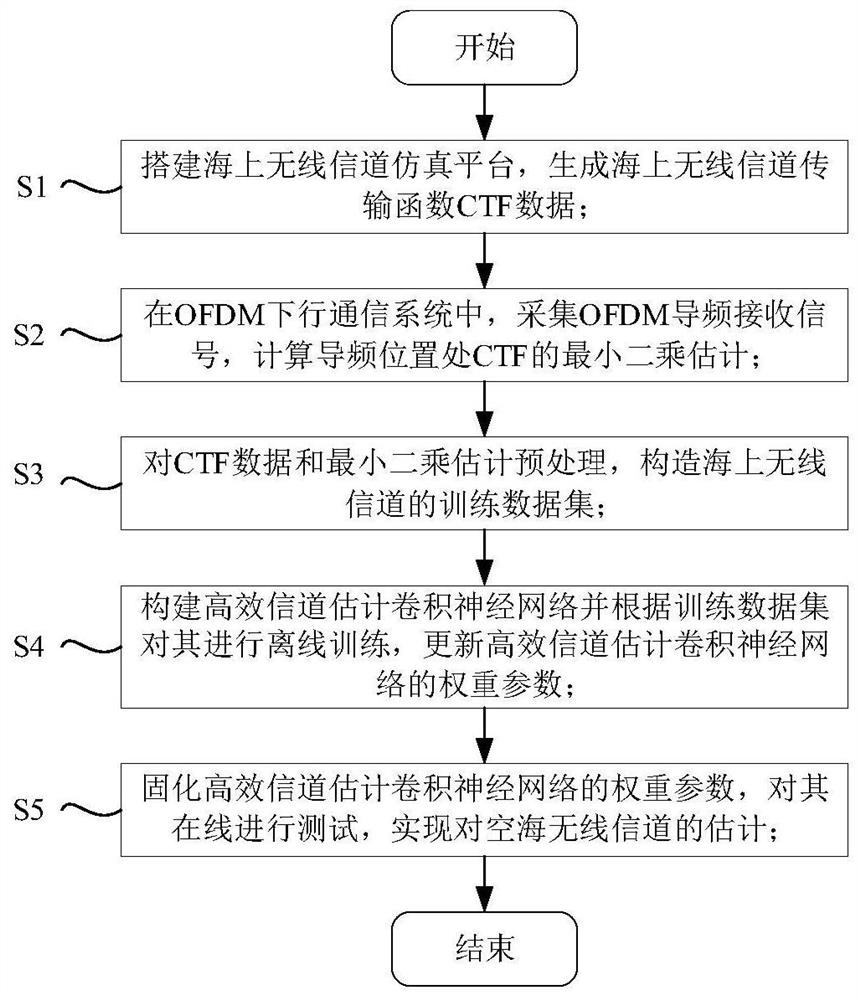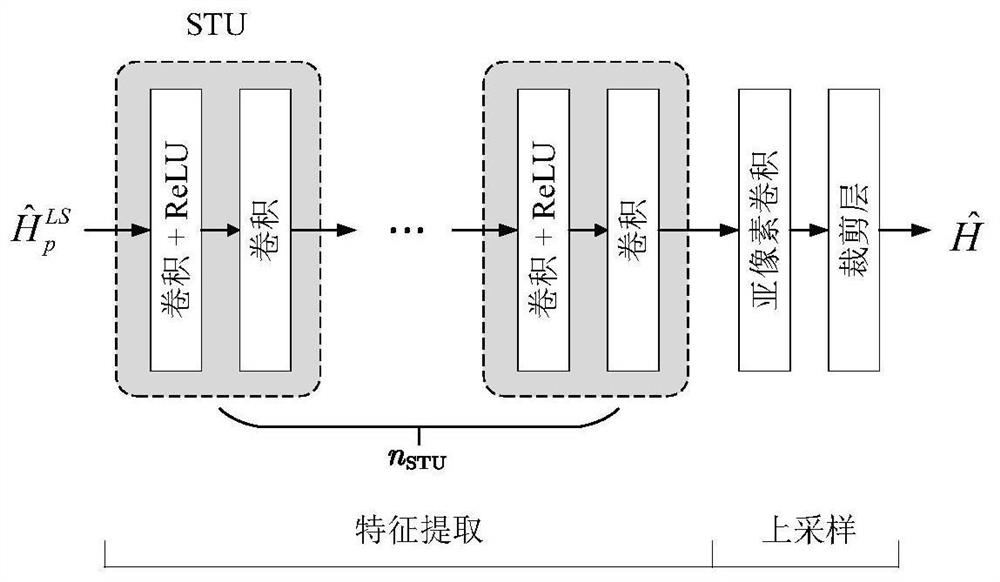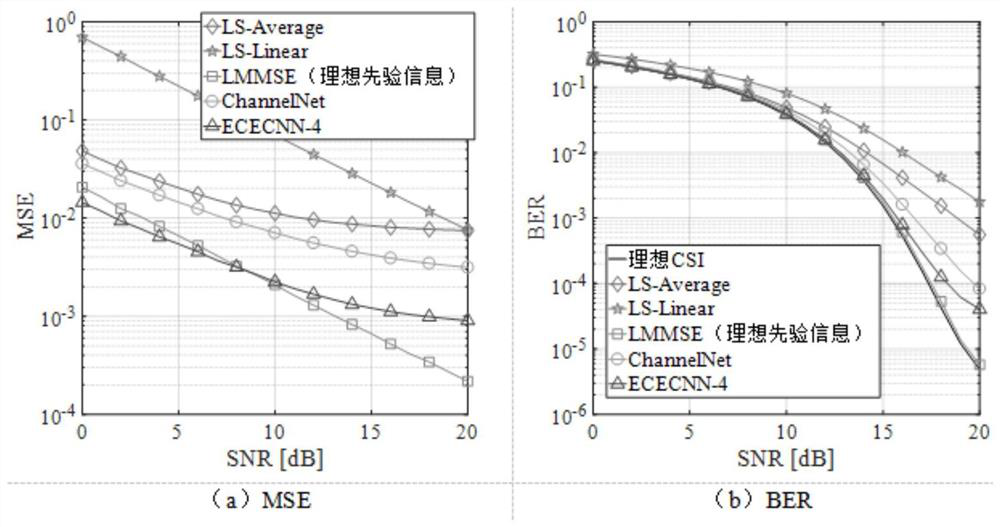Air-sea wireless channel estimation method based on deep learning
A technology of wireless channel and deep learning, applied in the field of air-sea wireless channel estimation based on deep learning, to achieve the effect of reducing model calculation complexity, reducing model parameter redundancy, and breaking performance bottlenecks
- Summary
- Abstract
- Description
- Claims
- Application Information
AI Technical Summary
Problems solved by technology
Method used
Image
Examples
Embodiment 1
[0059] Such as figure 1 As shown, a deep learning-based air-sea wireless channel estimation method includes the following steps:
[0060] S1: Build a maritime wireless channel simulation platform to generate maritime wireless channel transfer function CTF data;
[0061] S2: In the OFDM downlink communication system, collect the OFDM pilot received signal, and calculate the least squares estimate of the CTF at the pilot position;
[0062] S3: Preprocess the CTF data and least squares estimation to construct a training data set for the wireless channel at sea;
[0063] S4: Construct an efficient channel estimation convolutional neural network and perform offline training on it according to the training data set, and update the weight parameters of the efficient channel estimation convolutional neural network;
[0064] S5: Solidify the weight parameters of the convolutional neural network for efficient channel estimation, and test it online to realize the estimation of the air-...
Embodiment 2
[0102] More specifically, on the basis of Embodiment 1, in order to more fully illustrate the beneficial effects of the present invention, the effectiveness and advancement of the present invention will be further described below in conjunction with the simulation analysis and results of a specific embodiment.
[0103] In this solution, an OFDM-based downlink air-sea communication system is considered, and an LTE downlink pilot pattern, namely trellis pilot, is used. In the channel simulation platform, the height of the transmitting antenna is 800m, the height of the receiving antenna is 10m, the relative speed between the aircraft and the ship is 50km / h, the minimum horizontal distance of the transceiver is 1km, and the maximum horizontal distance is 30km. In the model test stage, the horizontal distance of the transceiver is fixed at 10km. The system uses a carrier frequency of 2GHz, a bandwidth of 1.4MHz, a conventional CP subframe format, the number of subcarriers in a sub...
PUM
 Login to View More
Login to View More Abstract
Description
Claims
Application Information
 Login to View More
Login to View More - R&D
- Intellectual Property
- Life Sciences
- Materials
- Tech Scout
- Unparalleled Data Quality
- Higher Quality Content
- 60% Fewer Hallucinations
Browse by: Latest US Patents, China's latest patents, Technical Efficacy Thesaurus, Application Domain, Technology Topic, Popular Technical Reports.
© 2025 PatSnap. All rights reserved.Legal|Privacy policy|Modern Slavery Act Transparency Statement|Sitemap|About US| Contact US: help@patsnap.com



